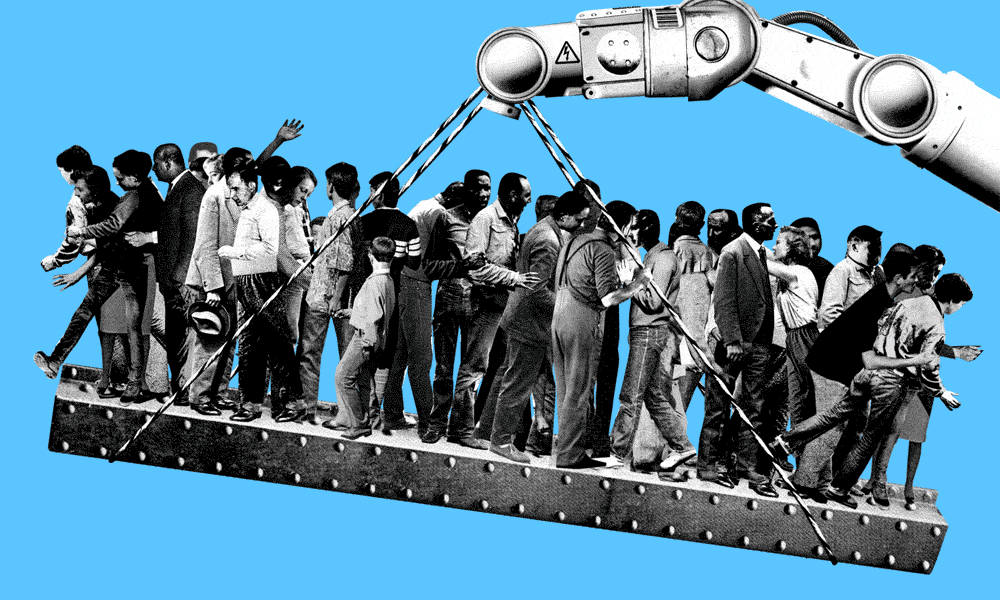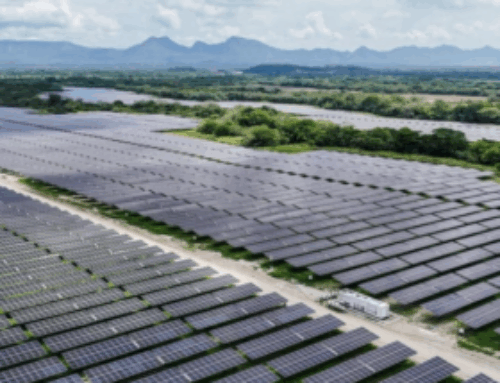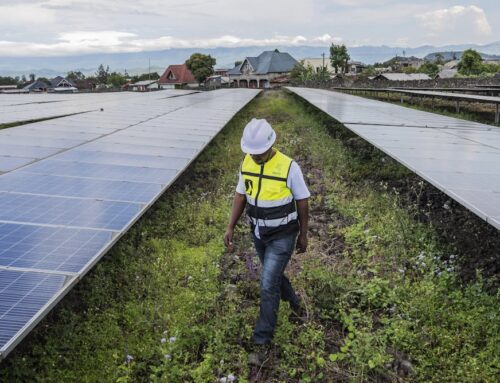AI: A Close-up of OpenAI’s ‘CEO of Applications. RTZ #910
November 19, 2025
…Fidji Simo leaning into the mother of all AI Scaling Jobs
OpenAI in its redrawn form, kinda has two CEOs, as I’ve discussed before. There’s Founder/CEO Sam Altman who is the uber-global face of the company, and currently focused on AI Research and Compute. All on the road to AGI in some form.
And then there’s former OpenAI board member Fidji Simo, who now is the ‘CEO of Applications’ for the company. It’s a huge and growing job as outlined in earlier posts.
OpenAI is on a tear of building a wide and deep swathe of AI applications and services on top of its core LLM AI GPT and ChatGPT products. And it’s kind of like spinning up several world class AI companies at the same time. While bringing in scads of new folks from a range of companies. All that falls under Fidji Simo, and so hers is a role worth understanding.
Wired lays it out well in “OpenAI’s Fidji Simo Plans to Make ChatGPT Way More Useful—and Have You Pay For It”:
“As OpenAI expands in every direction, the new CEO of Applications is on a mission to make ChatGPT indispensable and lucrative.”
“In case OpenAI’s structure couldn’t get any weirder—a nonprofit in charge of a for-profit that’s become a public benefit corporation—it now has two CEOs. There’s Sam Altman, chief executive of the whole company, who manages research and compute. And as of this summer, there’s Fidji Simo, the former CEO of Instacart, who manages everything else.”
She does her job remotely due to a medical condition:
“Simo hasn’t been seen much at OpenAI’s San Francisco office since she began as CEO of Applications in August. But her presence is felt at every level of the company—not least because she’s heading up ChatGPT and basically every function that might make OpenAI money. Simo is dealing with a relapse of postural orthostatic tachycardia syndrome (POTS) that makes her prone to fainting if she stands for long periods of time. So for now, she’s working from home in Los Angeles, and she’s on Slack. A lot.”
““Being present from 8 am to midnight every day, responding within five minutes, people feel like I’m there and that they can reach me immediately, that I jump on the phone within five minutes,” she tells me. Employees confirm that this is true. OpenAI’s famously Slack-driven culture can be overwhelming for new hires. But not, apparently, for Simo. Employees say she is often seen popping into channels and threads, sharing thoughts and asking questions.”
She along with Sam and the rest of the core, senior OpenAI team have a LOT on their plate:
“Simo joined during a chaotic period for OpenAI, which is expanding in nearly every direction. There are sovereign AI partnerships, new model releases, retail partnerships, multibillion-dollar compute deals, a proprietary chip, a mysterious hardware product—and of course, ChatGPT. “We do not battle for scope,” Simo says. “We battle for less scope.””
Her background seems tailor-made in hind-sight, for her current role:
“Outside Silicon Valley, Simo’s hiring came as a surprise. For those in the know, it was less of a shock. A native of Sète, a small fishing town in the south of France, Simo made a name for herself running the Facebook app at Meta before taking the top job at Instacart in 2021. She took the grocery startup public two years later. In the Valley, she’s known as a product visionary with a reputation for scaling consumer apps across the globe.”
“Simo’s role at OpenAI is, in large part, to do the same—turn the company’s research breakthroughs into moneymaking, must-have consumer products. She faces staggering competition from tech giants like Google and Meta, as well as AI startups founded by OpenAI alums, including Thinking Machines Lab, Anthropic, and Periodic Labs. “The thing that keeps me up at night is that the intelligence of our models is well ahead of how much people are using them,” Simo says. “I see my job as closing this gap.”
“Since she arrived, Simo has overseen the launch of Pulse, a product that connects to users’ calendars and gives them personalized information based on their schedule, chat history, and feedback; created a jobs platform to allow people to get AI-certified and look for roles that make use of their skills; and doubled down on improving ChatGPT’s responses to people having acute mental health crises. Eventually, sources say, she’ll be the person deciding how to roll out ads in ChatGPT’s free tier.”
The piece goes on to a Q&A discussion worth reading. Here are some highlights on some key issues:
“Zoë Schiffer: You’re the CEO of Applications—and you report to Sam Altman. What has that working relationship been like?”
“Fidji Simo: What Sam wanted was the ability to focus on research and compute, so I am trying to make sure that he can free up his time. Meanwhile, he realized that this is a company that evolved primarily from a research lab but became a really important product company, and that requires a different muscle. I see my role as making that product company incredibly successful while respecting the culture of the research lab.”
Then of course the multi-trillion dollar OpenAI AI Data Center infrastructure question:
“OpenAI is obviously one of the world’s most valuable startups, if not the most valuable, but it’s also losing billions of dollars every year.”
“I’ve noticed.”
“What opportunities do you see to get it on a path to profitability?”
“It all comes back to the size of the markets and the value we’re providing in each market. In the past, only the wealthy had access to a team of helpers. With ChatGPT we could give everyone that team—a personal shopper, a travel agent, a financial adviser, a health coach. That is incredibly valuable, and we have barely scratched the surface. If we build that, I assume that people are going to want to pay a lot of money for that, and that revenue is going to come.”
“Meanwhile, on the enterprise side, we sell an API and ChatGPT Enterprise, which is a great product but a very thin layer compared to all the things that we could be building for enterprise. If you think about building agents for every industry and function, there is so much to build, either by us or by enabling third parties to build on top of our platform.”
“So I’m like, OK, the markets are huge. The depth of value is huge. That’s the basic formula for monetizing. Then the real question becomes, will we have the compute to deliver that?”
She does a good job emphasizing the issue of AI Compute Scarcity holding up possibilities at scale:
“OpenAI has been doing hundreds of billions of dollars’ worth of deals to build data centers. When people talk about fears around the compute deals, they’re talking not only about the scale but about the deals feeling a little circular. Or the fact that a lot of the US economy seems to hinge on OpenAI and Nvidia at this point.”
“So first off, a lot of people say, “Whoa, these compute deals are massive,” but when you look at how constrained we are internally and how much more we could do if we had more GPUs, it’s very clearly the right decision. We have a pipeline of products that are going to make massive use of compute. I know these deals look risky on the outside, but on the inside, what’s much riskier would be to not lean into compute.”
“The companies that we’re making these deals with are extremely sophisticated. They are providing these kinds of deals and this kind of financing because they are very close partners who know our business very well.”
“You take a product like Pulse, which we launched through the Pro tier. I want that to be available to everyone, but because of the compute constraints, we’re not able to do that. I’m giving you one example, but there’s 10 of those.”
And of course the core question of trying to do so many things at once at scale:
“It seems like OpenAI is expanding in a lot of different directions at once. Do you see a risk in the company trying to do too much?”
“My role is to minimize that risk. And the way you solve that is simple. You attract the best talent, so instead of one person being across 15 projects, you have the best leader for every single project. I’m very focused on hiring and making sure that we have the best possible talent.”
“We believe that every category of software is going to be reinvented for AI, and that we have a role to play in making sure that all of the products that we use in the future are AI-enabled, AI-native from the ground up. So it does require having that level of ambition and the capabilities to fulfill that ambition, which is really my job in building out the company.”
And of course the perennial question of AI destroying jobs:
“There’s a lot of worry about AI disrupting jobs. How concerning is that for you?”
“I believe that there’s going to be massive job creation, but some job categories are going to be deeply disrupted. That’s why one of my first initiatives was launching OpenAI certifications, where we want to certify 10 million workers to be AI-ready, and a jobs marketplace to connect them with opportunities to apply those skills. We’re doing our part, but I think governments and companies are going to have a big role as well.”
And she passes one of the toughest questions with aplomb:
“Would you ever consider becoming CEO of the whole company?”
“Let’s be very clear: What Sam does, I cannot do. There’s so much to do just on my scope that I think I have a decade or more of things that I can do just right there. And I’m telling you, we need all of us. We need Sam so badly. We need me.”
The whole piece is worth a read for additional details and nuance. We’ll hear a lot more from Fidji Simo. But it’s useful to get a closer look at how she’s seeing her new job at thetop of OpenAI, at this early stage of this AI Tech Wave. Stay tuned.
(NOTE: The discussions here are for information purposes only, and not meant as investment advice at any time. Thanks for joining us here)
Search
RECENT PRESS RELEASES
Related Post













